Education and collaboration are core to how Associations provide value to multiple communities – their own and those of their constituents. This year is no exception. As we move toward an unleaded future, many questions remain as to how these new fuels will be safely delivered across the supply chain – a reality that must be heard by communities seeking to ban 100LL ahead of the industry’s 2030 goal. Safety is key here for all stakeholders as is the objective – an unleaded future. As a leader in the industry’s Eliminate Aviation Gasoline Lead Emissions (EAGLE) initiative, NATA is working with partners and across multiple fronts to deliver on its mission of empowering industry safety and success by educating fuel service providers on best practices for deploying unleaded avgas, while advocating for general aviation protections during the transition. We must stay the course in raising industry voices for that safe transition.
Safety management is another area of opportunity. NATA believes that an active, well-thought-out SMS will continually improve the level of safety in any organization, large or small. The Association has emphasized key areas of focus for our members’ success: the ability to scale SMS to operations as well as agency acceptance. New part 135 SMS NPRM requirements warrant further discussion as do questions that help us get to right-sized, effective, and efficient solutions. Such as, how do we identify hazards, assess risks, and share safety information? How can we do this better moving forward? What are the new requirements under the NPRM and how do I apply them to my operations? Programs like NATA’s Air Transport Safety Management course provide a roadmap and a template for designing, developing, implementing, and sustaining an effective and verifiable aviation safety management system (SMS). Knowledge is power. Consider signing up for a course and remain watchful for new resources and opportunities to learn about the impacts of the SMS NPRM in coming weeks.
Opportunities for education remain about the potential effects of revisions to DOT part 380 regulations for public charters. Proposed wide-sweeping changes to public charter regulatory definitions could have unintended negative consequences felt throughout the entire Part 135 industry, disrupting the critical emergency services and powerful economic growth our industry facilitates. Any regulatory examination must be factual, transparent, and data-driven — and the facts prove that public charter flights operated by Part 135 carriers provide safe and secure services to diverse communities.
As we continue to advocate for comprehensive FAA reauthorization, NATA has recognized the work of our members, industry partners, and legislators in advancing directives that increase FAA/industry collaboration, general aviation protections during a safe transition to unleaded fuels, investments in a robust aviation workforce, and provisions to foster emerging technologies such as advanced air mobility (AAM). It is through these strong coalitions that we’ve seen advances in common-sense initiatives contributing to a healthy, vibrant aviation system for all users, service providers, and communities.
By Curt Castagna, NATA’s President and CEO






